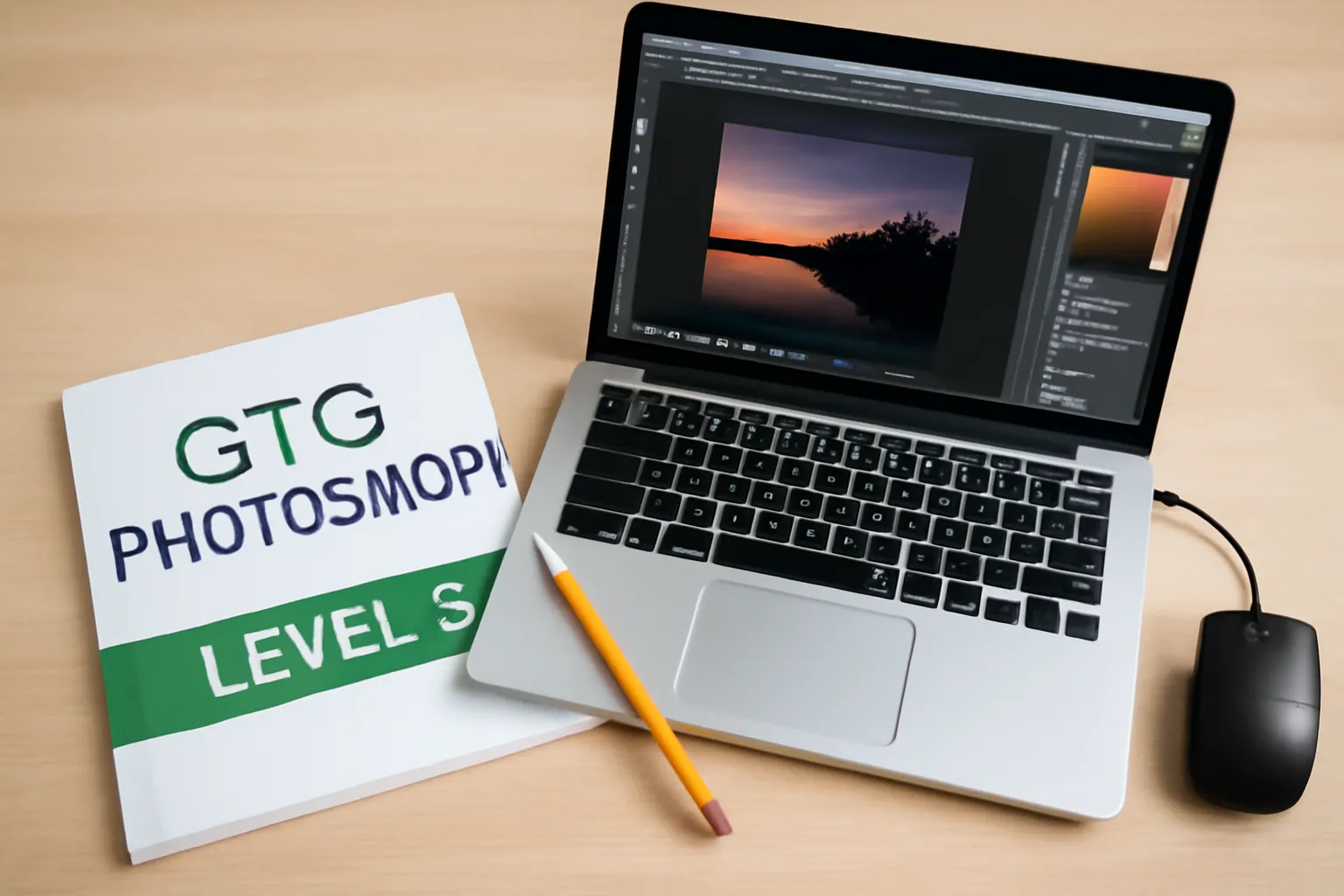In today’s digital world, mastering Photoshop is an essential skill for anyone interested in graphic design, photography, or digital art. If you’re aiming for the GTQ Photoshop Level 3 exam or looking to enhance your Photoshop proficiency, understanding the challenges associated with different levels, particularly Level 1-3 and the unique problems encountered in Level 3, can help prepare you for success. Let’s dive into common problems and tips that can help you navigate the world of Photoshop exams effectively.
GTQ Photoshop Level 3 Post Problems
When it comes to the GTQ Photoshop Level 3 exam, there are certain post-problems that many candidates face. These challenges typically arise in the more complex aspects of the test, which involve advanced Photoshop skills such as photo manipulation, intricate selection tools, and detailed retouching techniques.
Common Issues:
-
Complex Layering and Masking One of the most challenging tasks in Level 3 is managing complex layers and masks. Many candidates struggle with keeping layers organized and ensuring that all edits are non-destructive. It’s essential to understand how to use layer masks effectively and how to organize layers in a way that the edits remain flexible.
-
Advanced Color Adjustments Level 3 often requires advanced knowledge of color correction and enhancement tools like Curves, Hue/Saturation, and Selective Color adjustments. It’s common for candidates to get lost in the numerous settings, leading to unnatural color corrections.
-
Time Management Since the Level 3 exam involves completing tasks with high precision and creativity, time management can be a problem. Often, candidates spend too much time perfecting one aspect, like color grading or retouching, leaving them little time to finalize the project.
To succeed, it’s important to practice these techniques before taking the exam. Get familiar with advanced tools and settings in Photoshop, and try to complete mock exams under time constraints. Additionally, learning how to quickly switch between tools and settings will help manage time more efficiently.
👉 Click here for more GTQ Photoshop Level 3 preparation tips 👈
Photoshop Level 1-3: Understanding the Progression
Photoshop Level 1 through Level 3 exams are structured to test a range of skills, from basic functions at Level 1 to more advanced techniques at Level 3. Knowing how to progress through these levels is crucial for anyone aiming for professional certification or mastery of Photoshop.
Key Differences Between Level 1, 2, and 3:
-
Level 1 Basic Photoshop skills such as working with tools like the Brush, Healing Brush, and Clone Stamp. At this level, candidates are expected to complete simple tasks like cropping, resizing images, and applying basic adjustments. The main challenge at this stage is understanding the Photoshop interface and how to navigate its primary tools.
-
Level 2 Intermediate skills come into play here, including using more advanced tools like Layers, Adjustment Layers, and Filters. This is where most candidates start working with more intricate selections and paths. The difficulty increases with more specific tasks like creating a seamless composition or using smart objects.
-
Level 3 Advanced techniques dominate this level. Candidates must exhibit proficiency in retouching, advanced compositing, creating complex masks, and working with multiple images and layers seamlessly. At Level 3, you are expected to have an in-depth understanding of all Photoshop features, from non-destructive editing to color theory.
To effectively progress through these levels, consider setting up a study plan that covers each of the tools and techniques at the respective levels. Practice real-world scenarios and challenge yourself with more complicated projects as you advance. Understanding each stage’s unique challenges will help you be more prepared for exams and increase your confidence.
👉 Learn more about the Photoshop exam levels and strategies 👈
Photoshop Level 3 New Problem: Emerging Challenges
The world of Photoshop is constantly evolving, and as such, the Photoshop Level 3 exam also introduces new challenges to keep up with the latest trends and features in the software. Some recent problems that have been incorporated into the exam test the candidate’s ability to adapt to new tools and workflows.
Emerging Trends:
-
AI and Automation Features With Photoshop’s increasing integration of AI-powered tools like neural filters, content-aware fill, and the sky replacement tool, candidates need to demonstrate their ability to utilize these tools effectively. This introduces a new challenge for Level 3 candidates who must balance creative control with the efficiency of AI features.
-
Video Editing Integration As Adobe Photoshop continues to evolve as a multimedia tool, candidates may encounter tasks involving video editing. The ability to edit and manipulate video layers, use frame animation, and apply video filters may now be tested in Level 3 exams.
-
Enhanced Collaboration Tools Photoshop’s cloud-based features, such as collaboration through Adobe Creative Cloud, are becoming more prominent. Candidates might be required to demonstrate their ability to work with shared assets and collaborate on projects in real-time.
Keeping up with these new tools is crucial for passing the Level 3 exam. Practice using the latest features of Photoshop and integrate them into your workflow. Stay updated on software updates and new tools released by Adobe to ensure you are prepared for any surprises in the exam.
👉 Click here to explore new Photoshop tools and features 👈
Conclusion
Mastering Photoshop Level 3 requires a combination of creativity, technical skill, and efficient problem-solving. Whether you’re preparing for the GTQ Photoshop Level 3 exam or simply aiming to improve your Photoshop skills, it’s essential to address both the classic challenges and the new emerging tools in the software. Practice, preparation, and adaptability will be key to conquering these challenges and mastering Photoshop at its highest level.
Remember, the journey from Level 1 to Level 3 is a progression of skills that prepares you for complex tasks and real-world applications. Embrace the learning process, and you’ll be able to tackle any Photoshop challenge that comes your way. Keep experimenting with new features and techniques, and soon enough, you’ll be confident in your Photoshop abilities, ready to take on even the toughest projects.






